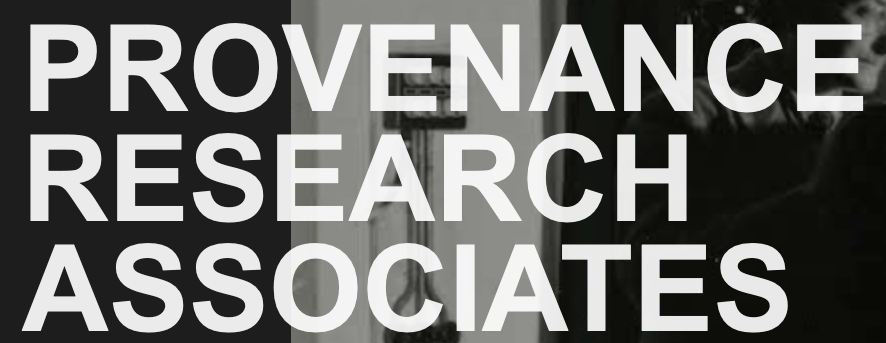Private Collecting and Public Display: Art Markets and Museums
University of Leeds, UK
30–31 March 2017
The Centre for the Study of the Art and Antiques Market at the University of Leeds announces the international two-day conference exploring the relationship between the ‘private’ and ‘public’ spheres of the art market and the museum. This interdisciplinary conference offers the opportunity to hear new research in the fields of art market studies, museum studies, and the histories of collecting.
I | Birth of the Museum
Marie Tavinor (Christie’s Education, London), The ‘Potent Tate’ and the Founding of the Tate Gallery: An Insight into Taste and the Politics of Donation in Late Victorian England
Margaraet Iacono (The Frick Collection, New York), Going Public: The Frick Collection’s Transformation from Private Home to House Museum
Helen Glaister (Victoria & Albert Museum, London), From Buxted Park to South Kensington and Beyond: The Ionides Collection of Chinese Export Porcelain
II | Legacy through Display: From Private to Public
Nicole Cochrane (University of Hull), Ancient Sculpture and the Narratives of Collecting: (Re)Contextualizing Museum Space
Alison Clarke (University of Liverpool / National Gallery London), Pure Eighteenth-Century Art Unspoiled by Any Element Foreign to Its Nature: The Agnew’s Exhibitions of The Frick Fragonards
Isobel MacDonald (University of Glasgow / The Burrell Collection), Tracing The Development of the Burrell Collection from Deed of Gift (1944) to Pollok Park, Glasgow (Present Day)
III | Dealers and Markets: Thinking of the Past, Looking towards the Future
Pamella Guerdat (University of Neuchatel, Paris), A Heritage under Construction: René Gimpel’s (1881–1945) Roles between Private Collectors and Public Museums
Ana Mântua (Dr Anastácio Gonçalves House Museum, Lisbon), One Man’s Choices and the Portuguese Art Market, 1925–1965
Kerry Harker and John Wright (University of Leeds), Blurring the Boundaries: Reconsidering ‘Public’ and ‘Private’ in the Alternative Art Market Activities of Artist-Led Groups, Organisations, and Collectives
IV | Power, Influence, and Agency: A Critical Look at Private Collections Going Public
Pier Paolo (IES Abroad Italy, Rome), From Objects of Devotion to Icons of Beauty: The Institution of the National Museum in the Vatican at the Time of the Roman Republic, 1798–99
Verda Bingol (Istanbul Technical University), From the Cradle to the Museum: The Elgiz Collection
Dorothy Barenscott (Independent Art Historian), Steve Wynn: Art Collecting and Exhibition, ‘Vegas Style’
V | The Visibility of Private Collections within the Public Arena
Marcela Drien (Universidad Adolfo Ibáñez, Chile), Exhibiting Domestic Museums: Chilean Art Collectors at Santiago’s Exposicion Internacional of 1875
Rasmus Kjaerboe (Ribe Art Museum, Denmark), Collecting To Be Modern: The Early Twentieth-Century Art Collections of Prince Eugen, Ernest Thiel, and Klas Fåhraeus
Kathryn Brown (University of Loughborough), Patrimony and Patronage: Collecting and Exhibiting Contemporary Art in France
VI | Museum Quality? Deaccessioning Museums onto the Art Market
Gareth Fletcher (Sotheby’s Institute of Art, London), But Is It Really Museum Quality? – Evaluating the Impact of Institutional Provenance within the International Art Market
Nicola Sinclair (University of York), ‘You Have Culled One or Two Beauties But the Memorial of Art Is Gone’: How (Not) To Translate Paintings of Historical Value from Private to Public Collections and back again in Mid-Nineteenth-Century Britain
Martin Hartung (ETH Zürich, Switzerland), A Philanthropic Legacy: The Controversial Case of DIA in New York
VII | Private Collections and Public Museums: Working across Boundaries
Kate Beats (University of Cambridge), Cambridge’s First Museums: The Private College Collections behind the Public Museums in Cambridge
Helen Ritchie (Fitzwilliam Museum, Cambridge), The Frua-Valsecchi Collection at The Fitzwilliam Museum: A Case Study
Tom Boggis (Holburne Museum, Bath), Public Collection, Private House: Display of the Heveningham Furniture Collection in the Twentieth Century
(…more at The Centre for the Study of the Art and Antiques Market at the University of Leeds website…)
